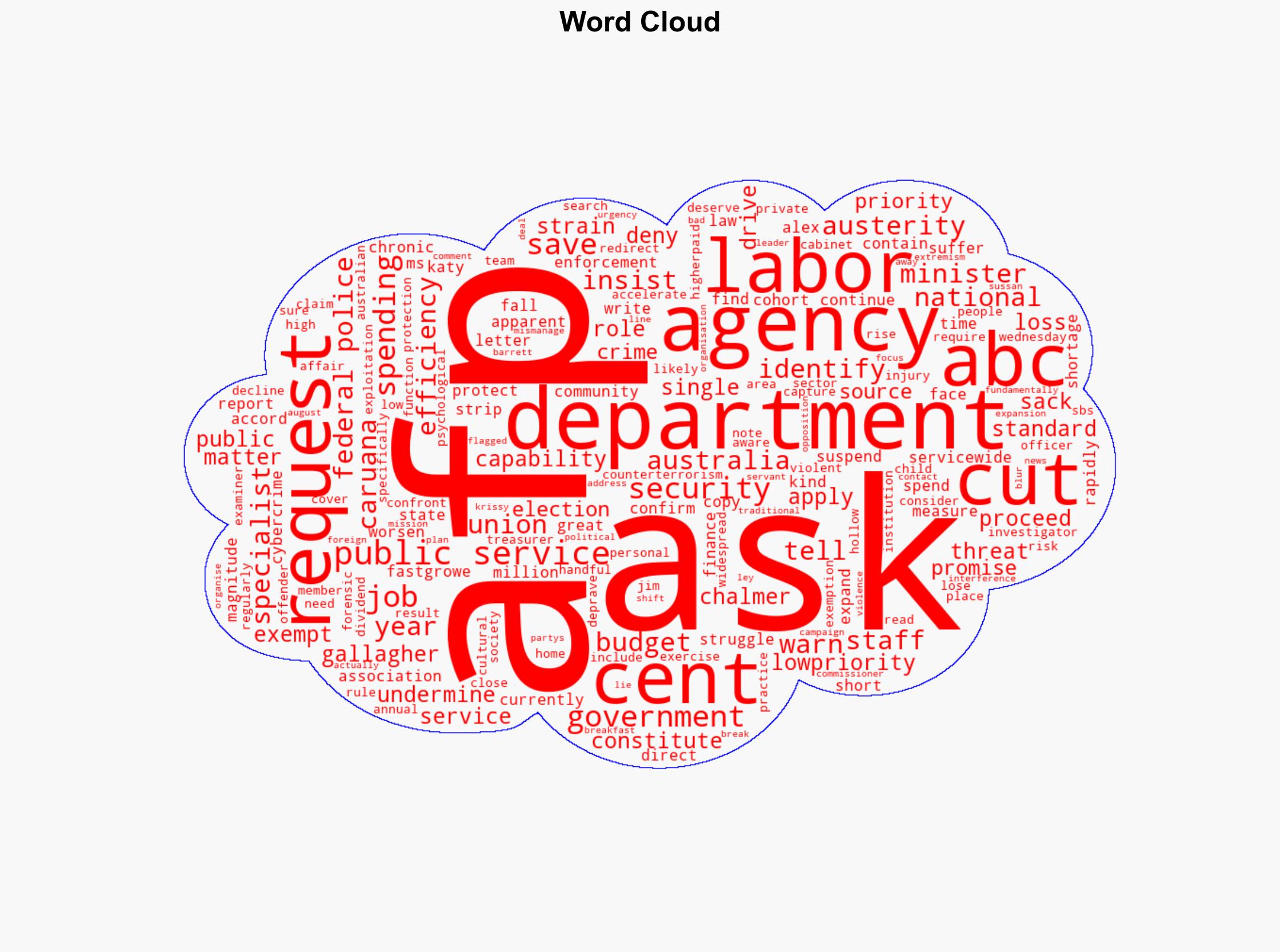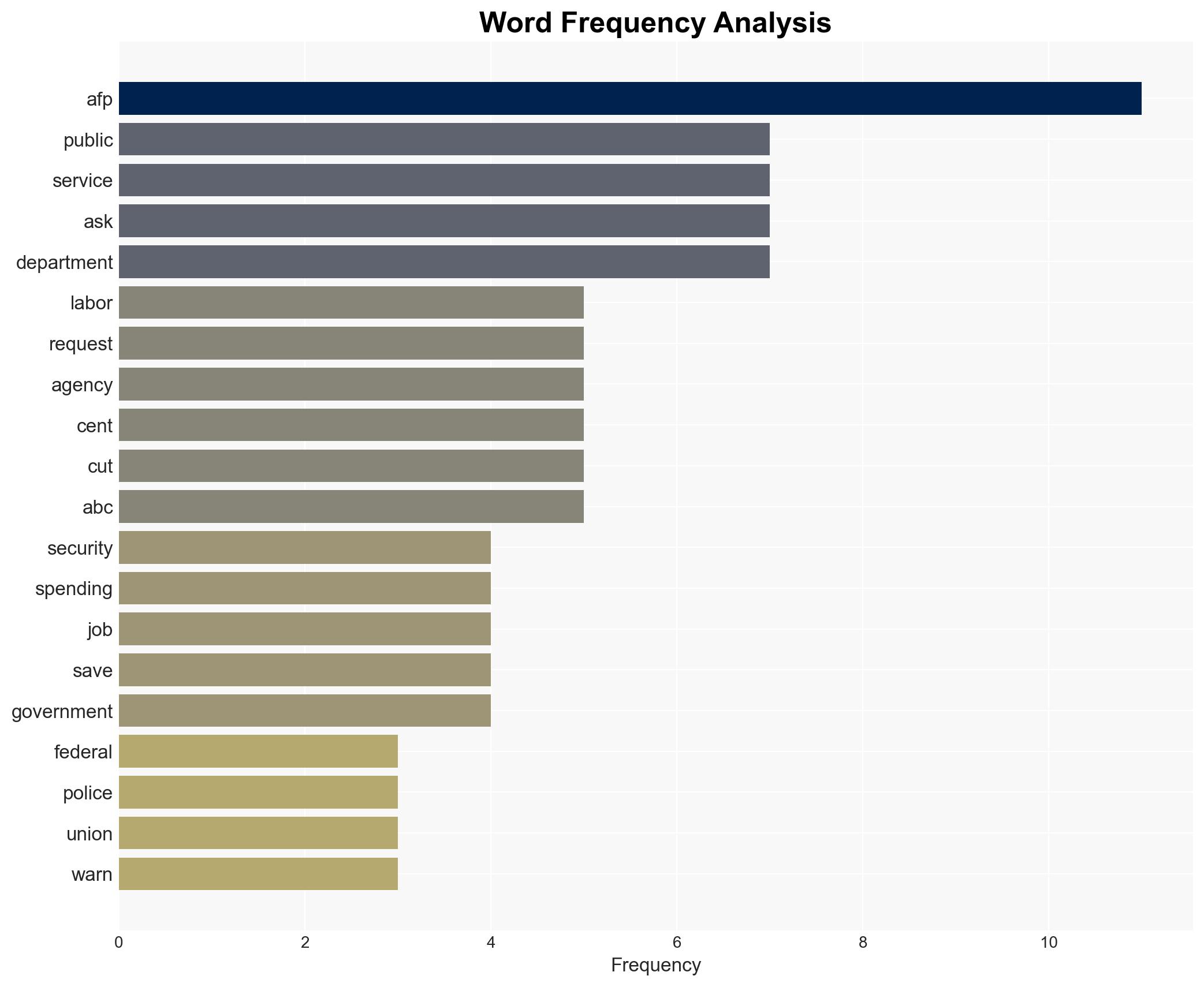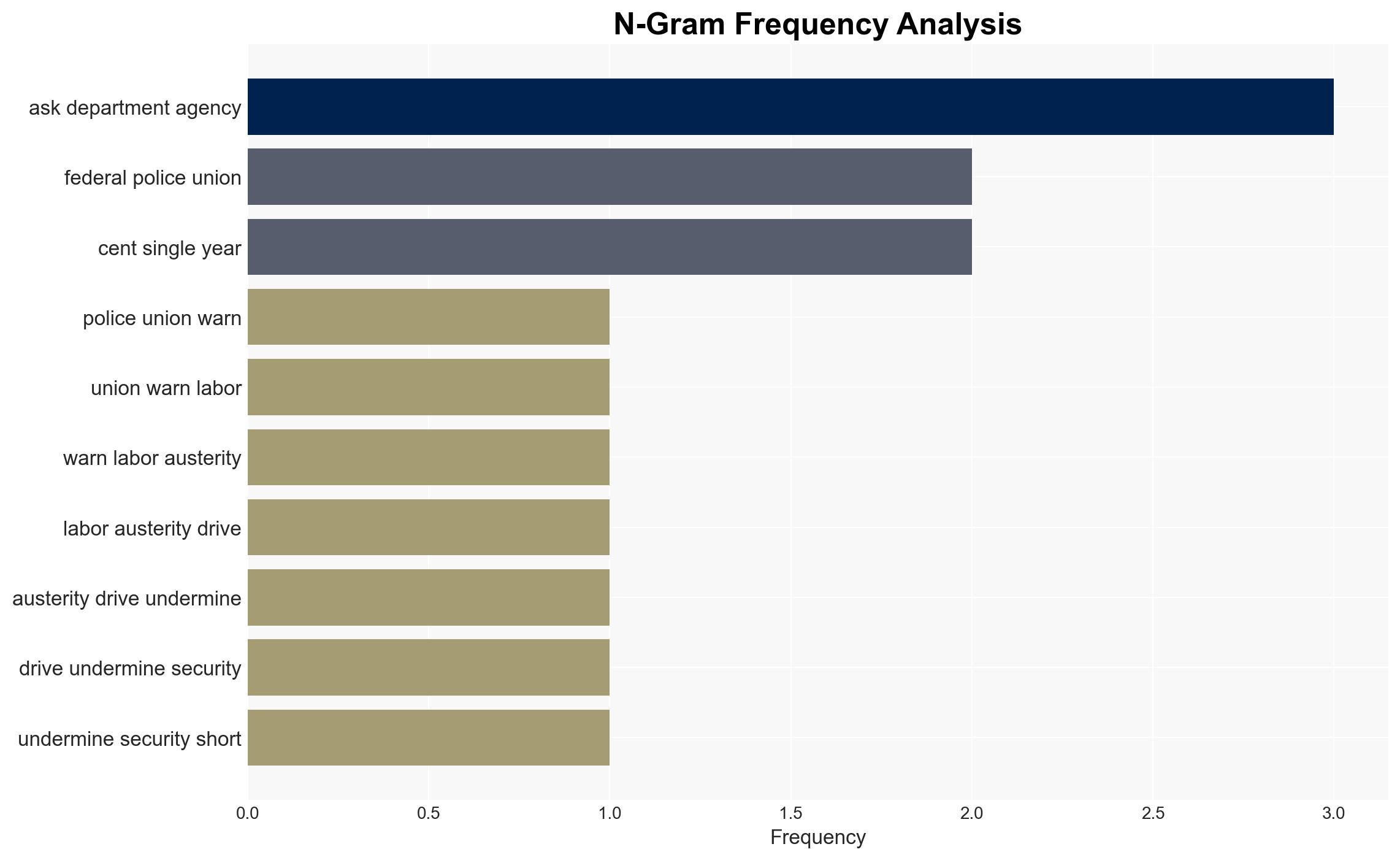Police union alerts that austerity measures could jeopardize national security and law enforcement effectiven…
Published on: 2025-11-26
AI-powered OSINT brief from verified open sources. Automated NLP signal extraction with human verification. See our Methodology and Why WorldWideWatchers.
Intelligence Report:
1. BLUF (Bottom Line Up Front)
There is a moderate confidence level that the proposed austerity measures by the Labor government could potentially undermine the operational capabilities of the Australian Federal Police (AFP), thereby posing a risk to national security. The most supported hypothesis is that the austerity measures will lead to resource constraints that could exacerbate existing challenges within the AFP. Recommended action includes a reassessment of the austerity measures’ impact on critical security functions and consideration of exemptions for the AFP.
2. Competing Hypotheses
Hypothesis 1: The Labor government’s austerity measures will significantly impair the AFP’s ability to maintain national security due to reduced funding and resources.
Hypothesis 2: The austerity measures will have minimal impact on the AFP’s operational capabilities as they will be able to reallocate resources efficiently and maintain essential functions.
The first hypothesis is more likely given the union’s warnings about existing strains on the AFP and the potential for further resource depletion. The second hypothesis assumes optimal resource reallocation, which may not be feasible given the current challenges faced by the AFP.
3. Key Assumptions and Red Flags
Assumptions include the belief that the AFP cannot absorb further budget cuts without compromising security operations. A red flag is the government’s denial of job cuts, which may not align with the practical implications of the austerity measures. There is also a risk of bias from the police union, which may exaggerate threats to protect its interests.
4. Implications and Strategic Risks
Potential cascading threats include increased vulnerability to cybercrime, terrorism, and organized crime if the AFP’s capabilities are diminished. Political risks involve public backlash against perceived weakening of national security. Economic risks include the cost of addressing security breaches resulting from reduced law enforcement capacity.
5. Recommendations and Outlook
- Conduct a detailed impact assessment of the austerity measures on the AFP’s critical functions.
- Consider exemptions for the AFP from broad austerity measures to maintain national security capabilities.
- Best-case scenario: The government identifies and redirects low-priority spending without impacting security.
- Worst-case scenario: Significant security lapses occur due to resource constraints.
- Most-likely scenario: The AFP faces operational challenges but manages to maintain core security functions with some strain.
6. Key Individuals and Entities
Katy Gallagher, Alex Caruana, Krissy Barrett, Jim Chalmers, Sussan Ley
7. Thematic Tags
Structured Analytic Techniques Applied
- Cognitive Bias Stress Test: Expose and correct potential biases in assessments through red-teaming and structured challenge.
- Bayesian Scenario Modeling: Use probabilistic forecasting for conflict trajectories or escalation likelihood.
- Network Influence Mapping: Map relationships between state and non-state actors for impact estimation.
Explore more:
National Security Threats Briefs ·
Daily Summary ·
Support us





